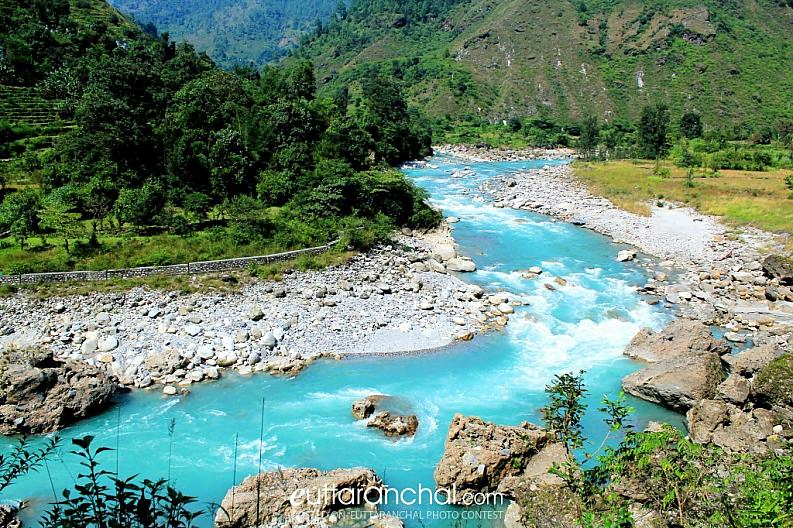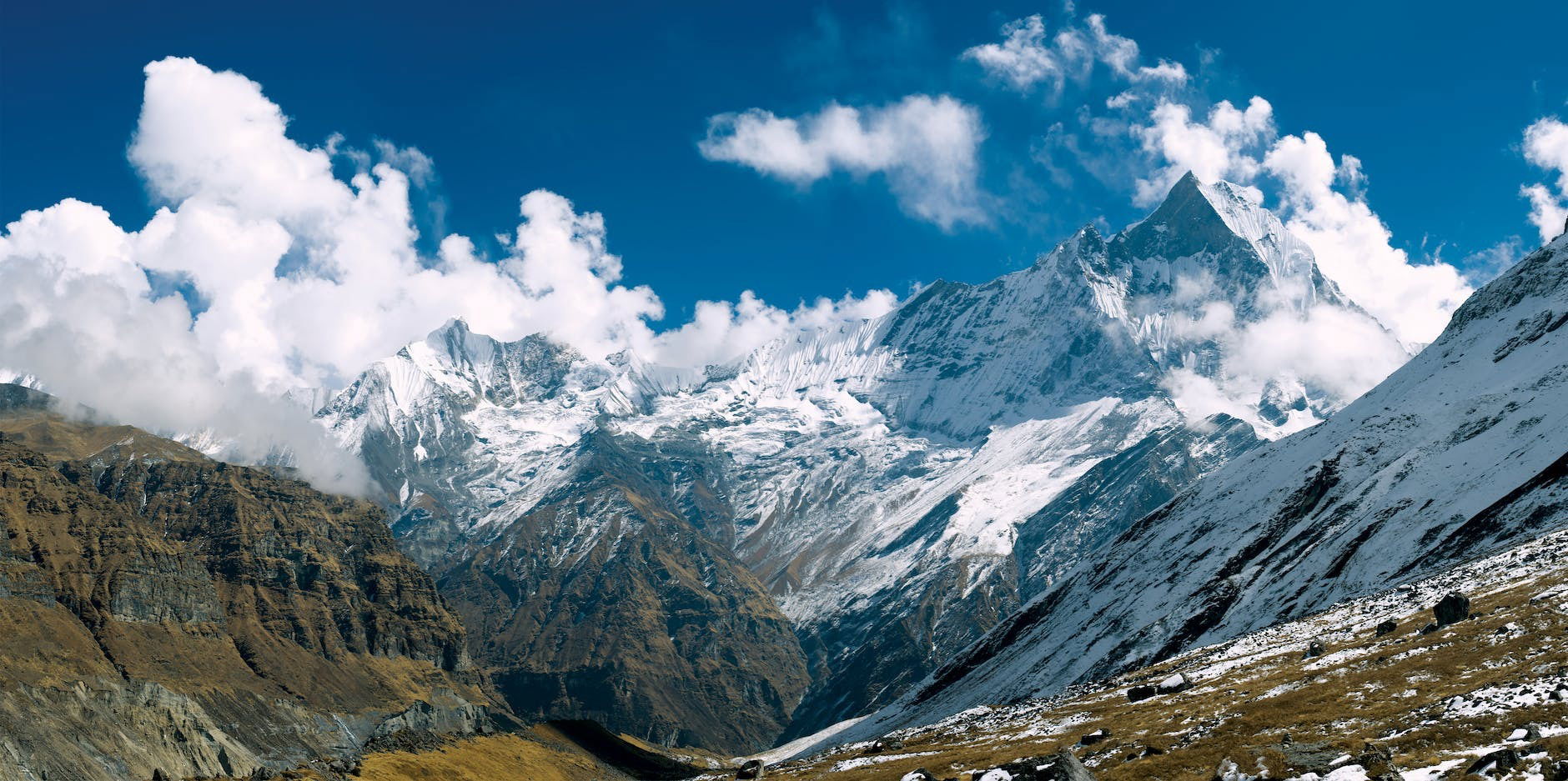A Trek to Pindari Glacier and Nanda Devi B.C with Tassie and Anna-impact of eco tourism in India

At REGENERA we love discovering exciting remote locations, heritage and supporting communities always with amazing heritage. This time we share another exciting article from our collaboration and support to Mr Partha Banerjee.
In his own words...
"The moment we started the journey, we felt a fresh smell from the thick, dense forest of Loharkhet. It was a 4-hour journey continuing from Deora village to stay near Almora. We were in tune with the beautiful sound of the wild waterfalls along the roadside.
On the first day, we walked a 12 km stretch to reach Dhakuri. When we reached, it was dawn, and the chef prepared hot tea and served it in our comfy tents. The comfort of the sleeping mattresses in the tent made me feel just like a home bed.
The following day, we woke up early to the majestic view of the snow-capped mountains. We walked for another 13 km to reach the village of Khati. We camped 300m from the village with views of the snow-capped mountains. The sunset made us feel the beauty of Pindar Valley with its orange color.
We continued the next morning's strenuous uphill walk for 14 km to reach Dwali village, just a small village with a few shops for the trekkers to rest. Peaks like Panwali Dwar (6683m) and Maikotli (6803m) looked sharper, and the glow of the sunlight appeared more vivid.
The next morning, we could feel our destination: The zero point of Pindar Valley. It took a whole day to reach the alpine range of the valley. Fresh snowfall welcomed us. The full moon night under the tent showed us the twinkling stars and mystical snow-covered mountains. We convinced our grey cells to accept the raw beauty of Mother Nature.
After a delicious continental dinner, soft snow covered our tents. Early morning was sharp white as the sun reflected the fresh snow of the holy mountain. We walked for a kilometer to reach the dead end and witnessed the source of the mighty river Pindar, which is a major contributor to river Aloknanda. While descending, we kept looking at the wild horse breeding lush green grounds. It was like heaven on earth, hardly untouched by human civilization.
The second-highest peak in our country is situated in the heart of the UNESCO World Heritage site of Nanda Devi wildlife sanctuary. It seems less busy than domestic hikes as the route is strenuous. We started from Munsiyari, the hub of treks in northern Kumaon. Once it used to be the trade center between India and Tibet before the '60s war with China. We drove 12 km from our picturesque hotel to Chilam Dhar, the ascending point of our long trek.
The second-highest peak in our country is situated in the heart of the UNESCO World Heritage site of Nanda Devi wildlife sanctuary.
We camped at Lilam after an 8 km moderate walk, a small trekker's hub. One tea shop with two village houses hosted us for the night. We camped outside a vegetable garden, which helped us add fresh vegetables to our stock for the night. After a heavy breakfast, we walked along the valley for a 16 km uphill strenuous path to reach Bukdiar, an army camp. Along the way, I felt the rough terrain of the Himalayas and the warm hospitality of the ITBP (Indo-Tibet Border Police) all the way. A traffic jam of other porters and mules was a common feature of the path, highlighting its toughness. I saw a mountain goat carrying a sugar pouch for the border police. We camped along the riverside of Gouri Ganga, the white water river. The sound of the river played a musical score throughout the night.

The next morning, we headed for Martoli, a dense village with ancient wood-carving houses. When we looked in the distance, the village was beautiful, but as we approached, it was empty. It felt like a ghost village with a prosperous trade history left behind. The next morning, we visited the Nanda Devi temple, the heart of the famous Nanda Devi festival that occurs every 12 years.
Prayers from our team members reached up to the temple. We headed for the Gahngar village, the base camp's gateway. On the way, we felt the strong chilly wind from the glaciers. Finally, after a 17 km walk, we reached Gahngar and had a glimpse of the mighty Nanda Devi East ridge in the afternoon.
The next early morning, we started the trek, and the first light of the sunrise touched our senses. The glow of deep red color reflecting from the peak changed as we approached the base. We clearly saw a group of wild Thar (high-altitude mountain goats), being the first members to reach there. A 5 km uphill walk seemed to be an easy one as we had our best view of the Nanda Devi East and West peaks at 7 am. We ate our packed breakfast under the warm sunlight and returned to Barfu village via Gahngar.
Barfu village caught our eyes as we saw a Tibetan school standing as it was from the era of the 1960s. We had tea with one of the villagers. The recent development of roads may reach Barfu soon, but I wish it remains the same forever. The houses were small but cozy. Local liquor and pancakes contributed to celebrating our partner Anna's birthday. Dance and bouquets of wildflowers added charm as our team celebrated the journey with the utmost spiritual experience."
The second-highest peak in our country is situated in the heart of the UNESCO World Heritage site of Nanda Devi wildlife sanctuary.
As Nepal predominantly offers this kind of alpine expedition in the Southeast Asia region with its massive dominance, India can also develop alpine tourism to the domestic and international circuit . The villages in Darma Valley and Pindari Valley need the utmost attention due to Hamlet population & lesser cultivation activities. Also, the young population certainly finds difficulties in decent earnings in the remote valleys of the Indian Himalayas.
Visitors' impacts on remote destinations: An evaluation of a Nepalese mountainous village with intense tourism activity- By Rekha Baral & Deepak Prasad Rijal explains the impact on the economy due to eco-tourism in Nepal.See: https://www.sciencedirect.com/science/article/pii/S2405844022016838
